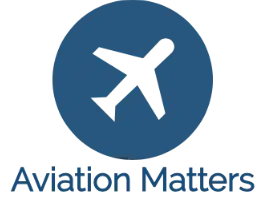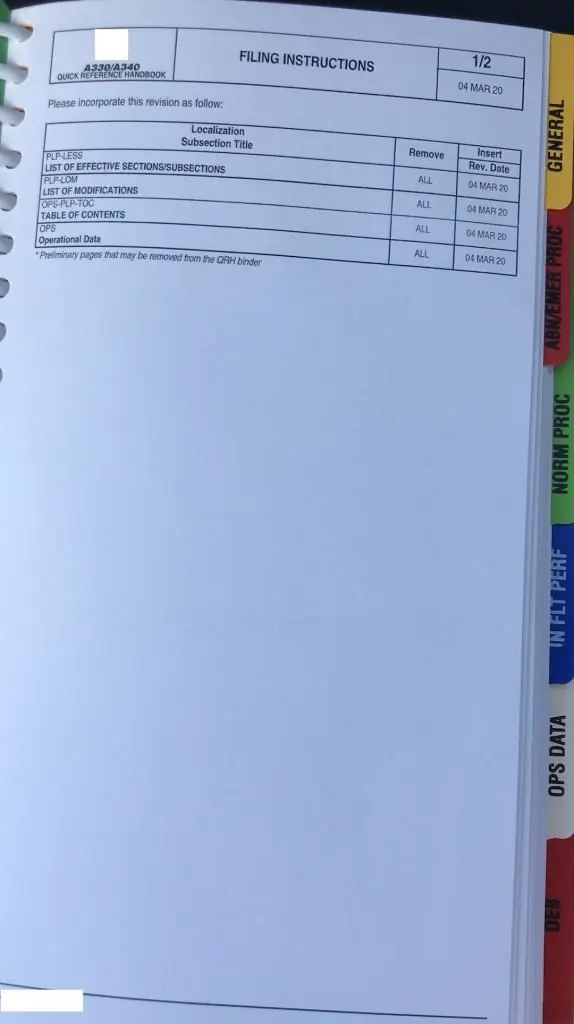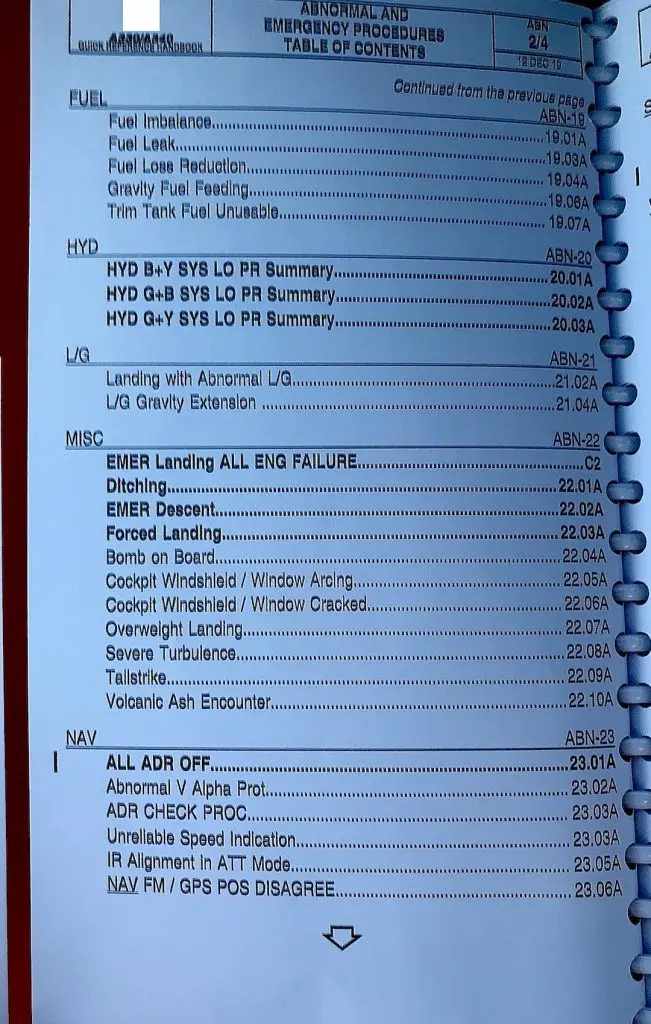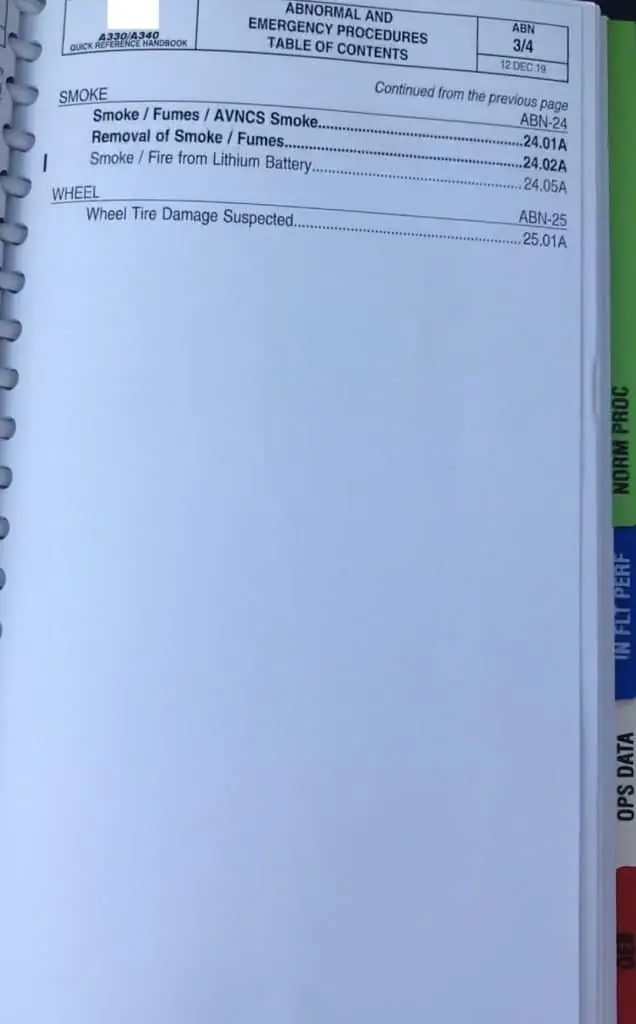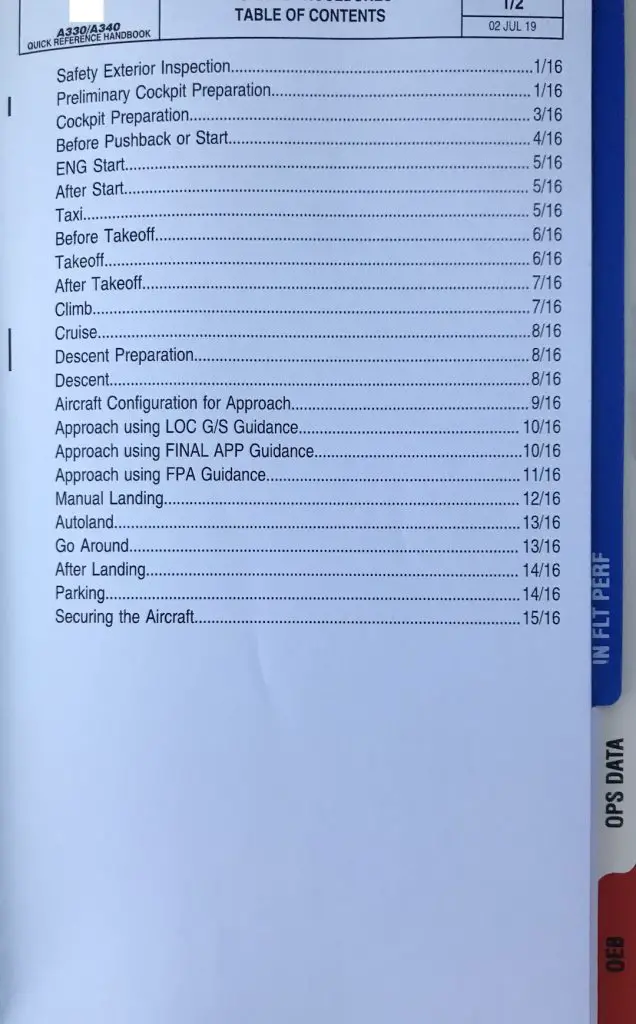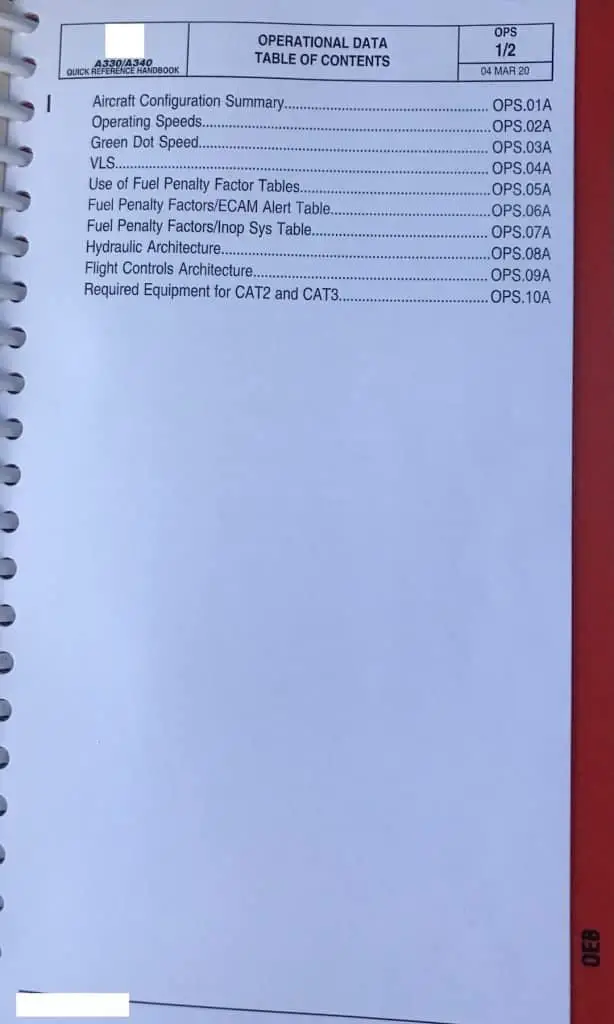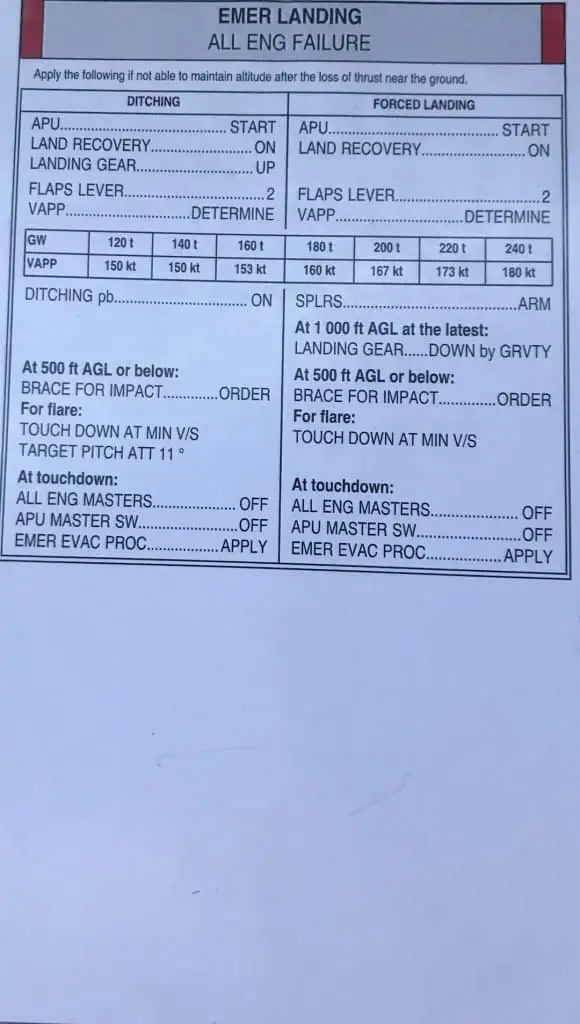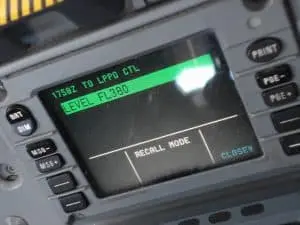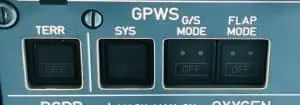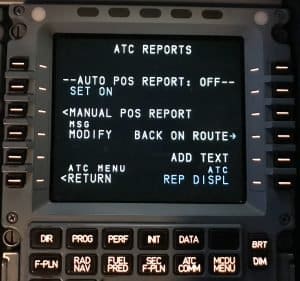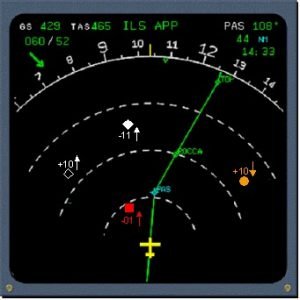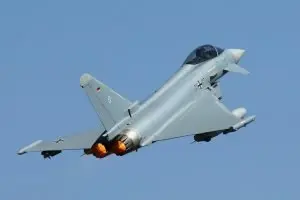
Pete has been flying aircraft for the last 20 years. He has flown everything from light piston aircraft up to heavy jets as both First Officer and Captain. He’s currently enjoying life flying the Airbus A330 for a major international airline.
The QRH (Quick Reference Handbook) is a book available to pilots in the cockpit that contains various procedures to deal with abnormal and emergency situations on the aircraft.
Table of Contents
When do pilots use the QRH?
There are generally 3 circumstances that will direct pilots to use the Quick Reference Handbook (QRH):
- After actioning Memory Items
- If directed by the ECAM (Electronic Centralized Aircraft Monitor) system
- To deal with an abnormal event.
Related: The ECAM/EICAS Explained
1. Memory Items
In most abnormal events in modern aircraft you have time to read and follow written checklists, but there are some events that require immediate actions from memory.
For example a rejected take-off or unreliable airspeed indication. These “memory items” deal with the immediate actions required to maintain the safety of the aircraft.
Once these actions have been carried out, the QRH is referenced to a) ensure the memory items were correctly carried out, and b) to detail the next steps to be taken.
(As I say, most modern aircraft have very few memory items – for example, the Airbus A330 only has 10. However, an older jet I used to fly had 48!)
Airbus A330 Memory Items
- Loss of Braking
- Emergency Descent
- Stall Recovery
- Stall Warning at Lift Off
- Unreliable Speed Indication
- EGPWS Cautions
- EGPWS Warnings
- TCAS Warnings
- Windshear Warning – Reactive Windshear
- Windshear Warning – Predictive Windshear
2. ECAM (Electronic Centralised Aircraft Monitor) System
The ECAM (Electronic Centralised Aircraft Monitor – Airbus) or EICAS (Engine Indicating and Crew Alerting System – Boeing) may call for actions to be completed from the QRH.
Related: A Pilot’s Guide to the ECAM/EICAS
3. Abnormal events
An abnormal event may lead to the QRH being used: for example, if a decision is made to land above max landing weight the QRH “Overweight Landing” checklist would need to be carried out (if the particular aircraft doesn’t have the ability to dump fuel, for example).

What does a QRH look like?
The Quick Reference Handbook is a hardened spiral-bound binder separated into different sections by plastic tabs or dividers. The QRH is designed to be easily accessible to the crew and is usually stored in a “cubby hole” beside their seat or lower down beside their legs.
Photos of an Airbus QRH

QRH Index Tabs/Dividers 
QRH Abnormal Procedures 
QRH Abnormal Procedures 
QRH Abnormal Procedures 
QRH Normal Procedures 
QRH Inflight Performance 
QRH Ops Data 
QRH Emergency Landing
How do pilots use the Quick Reference Handbook (QRH)?
The Quick Reference Handbook (QRH) is a book or folder available to the pilots on the flight deck. They will enter it in one of the situations above and go to the relevant section depending on the information they need:
QRH Sections
Abnormal and Emergency Procedures
This section contains the bulk of the QRH procedures. The beginning of the checklist includes ECAM Advisory (ADV) and System Reset sections, followed by the procedures divided by system.
- ECAM Advisory Conditions contains information on what has triggered an ECAM Advisory. An ECAM Advisory is where the E&WD will have a pulsating white “ADV” at the bottom of the display and the systems page will indicate what has caused the advisory. For example, the “ADV” may be flashing with the APU page displaying “LOW OIL LEVEL”.
Related: The Auxiliary Power Unit (APU) Explained - System Resets – Airbus allows certain systems to be reset in certain conditions. This section will provide information on how to achieve the reset and when it may be carried out. For example, the DATALINK – ATSU reset may be attempted when CPDLC (Controller Pilot Datalink Communication) is INOP (i.e. inoperative). Resets are usually achieved by either powering down and restarting the particular system, or by means of circuit breakers (“reset switches”) on the overhead panel.
More information on CPDLC procedure can be found here. - QRH Procedures – divided by system (e.g. AIR, ELEC, HYD, F/CTRL etc.) and then sorted by failure (e.g. F/CTRL DIRECT LAW, F/CTRL ELEV REDUND LOST, F/CTRL ELEV SERVO FAULT etc.).
Normal Procedures
The Normal Procedures section covers, surprisingly, normal procedures. This is just a brief overview and the company Ops Manuals will give more detailed SOPs (Standard Operating Procedures).
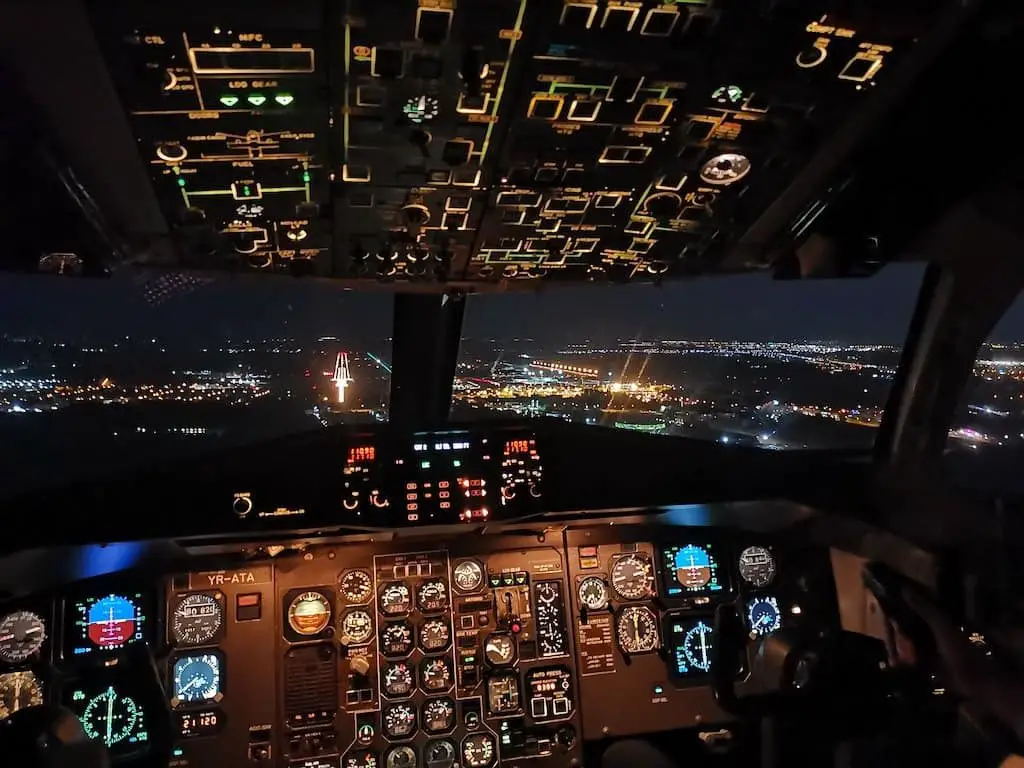
In Flight Performance
Although most airlines these days use some version of an EFB (Electronic Flight Bag), the QRH still provides an option of calculating performance. The In Flight Performance section includes the ability to calculate:
- Landing Distance without Failure – the landing distance required to land with a fully serviceable aircraft depending on the conditions at the airport.
More information about performance factors can be found here. - Landing Distance with Failure – this is where we can calculate how much distance we will require to stop the aircraft depending on the failure we have. For example, an engine failure won’t actually increase the required landing distance (LDR) by much, but a dual hydraulic failure will.
- Drift Down – if we lose an engine in cruise we may not be able to maintain altitude. This graph allows us to calculate the “drift down altitude” i.e. the altitude at which we can maintain level flight with an engine failed.
- Conversions – here we can calculate various conversion IAS/Mach, wind component and pressure altitude correction, for example.
Operational Data
- Aircraft Configuration Summary – there are often small differences between the specifications of aircraft in an airlines fleet. Aircraft that are originally built to an operators specification may be bought and sold numerous times during their lifetime. The section shows exactly what equipment each specific aircraft is configured with.
- Operations Engineering Bulletins (OEBs) – these are bulletins issued by Airbus “to provide temporary operational procedures that address any deviation, from initial design objectives, having an operational impact.” These are entered in the QRH (Quick Reference Handbook) and specify whether the the OEB has an ECAM entry, and if so the ECAM entry should be disregarded and the OEB actioned. Further reading on Airbus OEBs here.
- Normal Checklists – basic versions of the various checklists (before takeoff, approach, landing checklists etc.) are included in this section. Again, company operations manuals will provide expanded detail.
Frequently Asked Questions about the QRH
What is a QRH (Quick Reference Handbook)?
The QRH (Quick Reference Handbook) is a book available to pilots in the cockpit that contains various procedures to deal with abnormal and emergency situations on the aircraft.
What are “memory items” in aviation?
Memory Items are actions that are so time-critical that pilots must action them from memory without delay e.g. engine failure, unreliable airspeed indication, stall warning etc.
What are ECAM and EICAS?
ECAM (Electronic Centralised Aircraft Monitor) and EICAS (Engine Indicating and Crew Alerting System) are electronic systems that display information about various aircraft systems (engines, flight controls, hydraulics etc.) to the crew. In addition, they can present crew with electronic checklists and actions to be taken in the event of a detected system or instrument failure.
What are ECAM Advisories (ADV)?
An ECAM Advisory is triggered when the monitoring system detects an exceedance of an aircraft system limitation. The ECAM Advisory is presented to the crew as a pulsating white “ADV” indication at the bottom of the upper ECAM. The lower ECAM will show the relevant systems page (air, hydraulic, engine etc.) and the exceedance will be visible to the crew.
[Featured Image: Franz Harvin Aceituna/Unsplash]
If you found this article interesting please take 5 seconds to share this on your favorite social media. Thanks so much, I really appreciate it! [email protected]

Pete has been flying aircraft for the last 20 years. He has flown everything from light piston aircraft up to heavy jets as both First Officer and Captain. He’s currently enjoying life flying the Airbus A330 for a major international airline.
